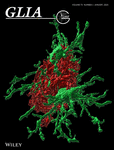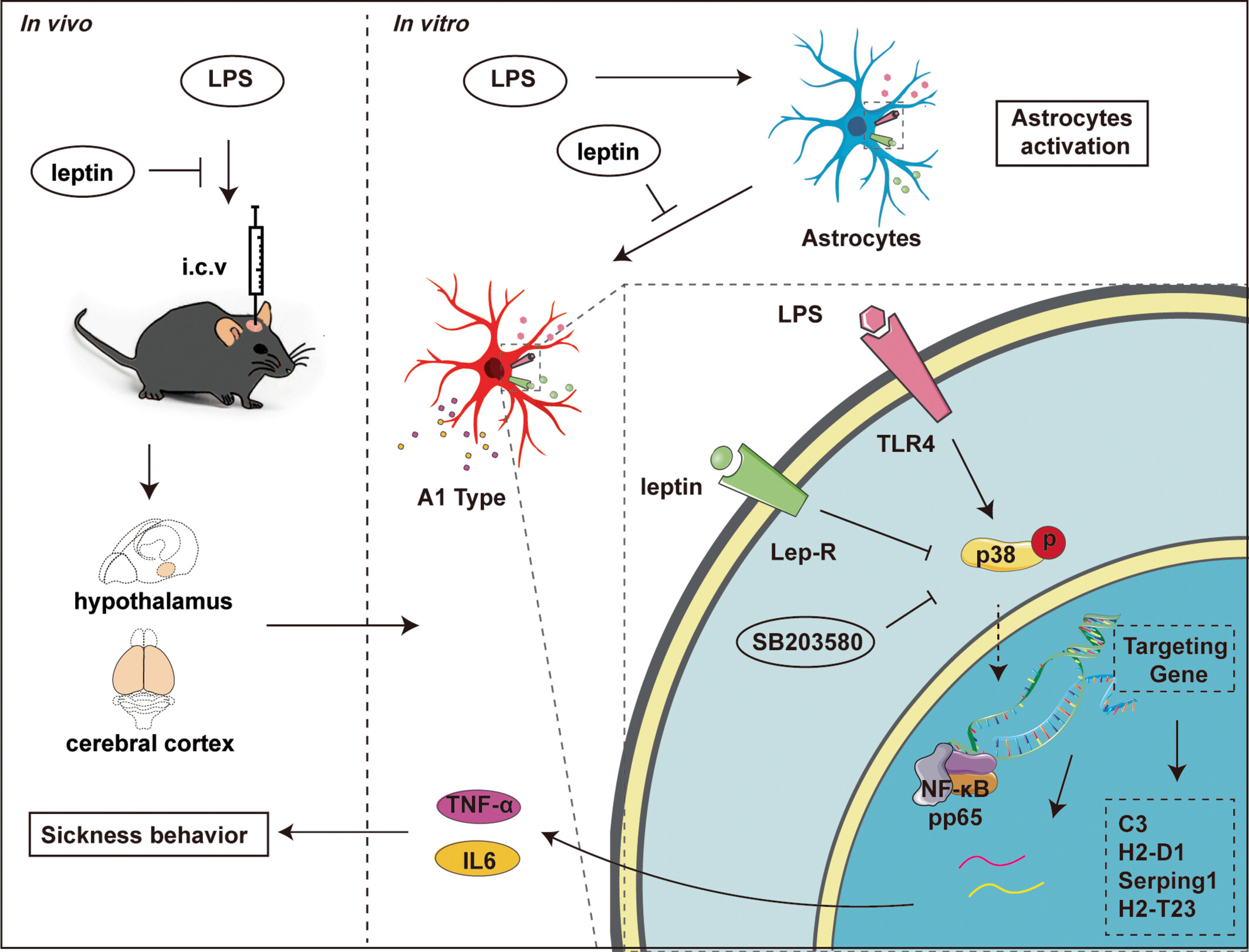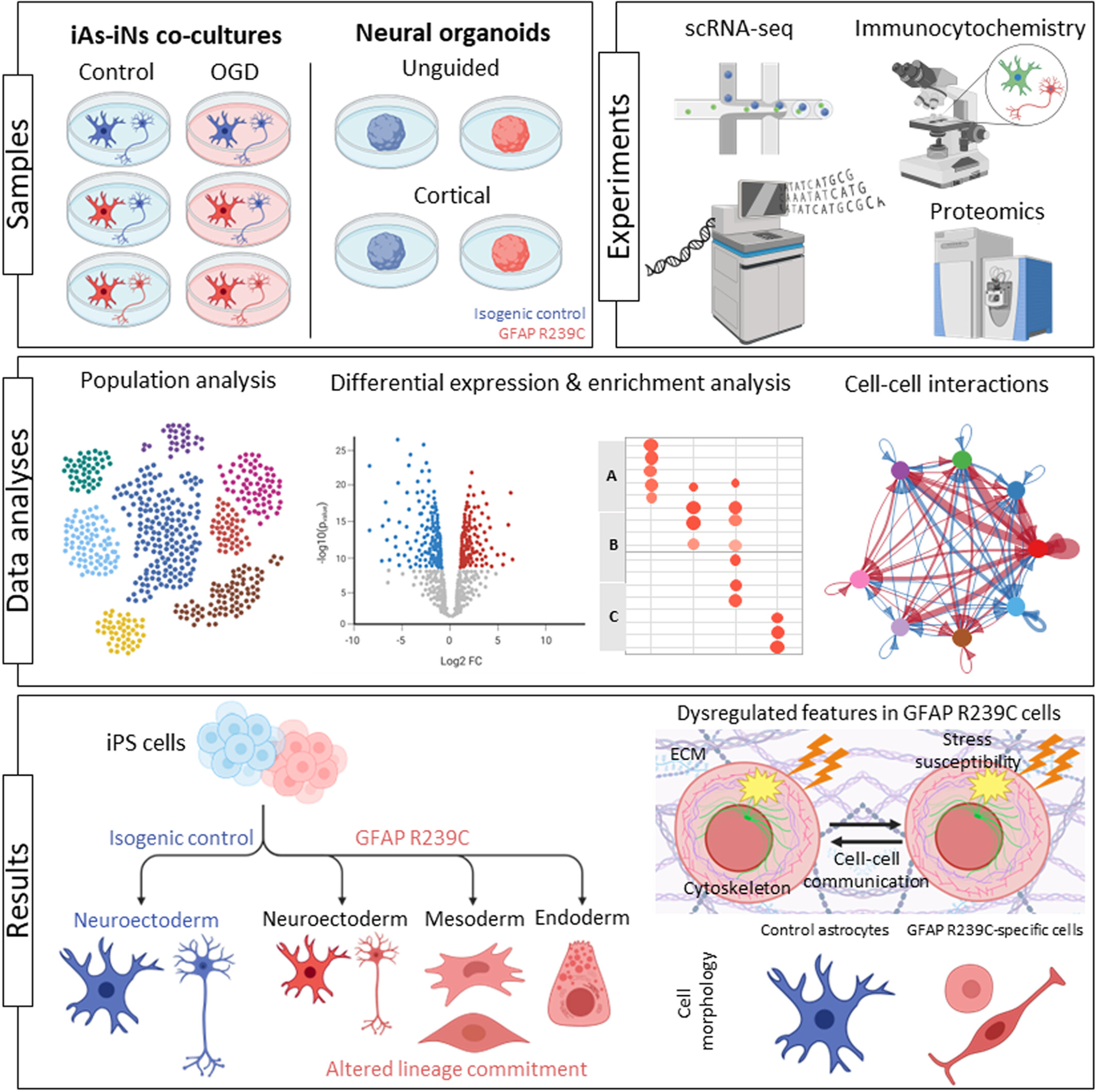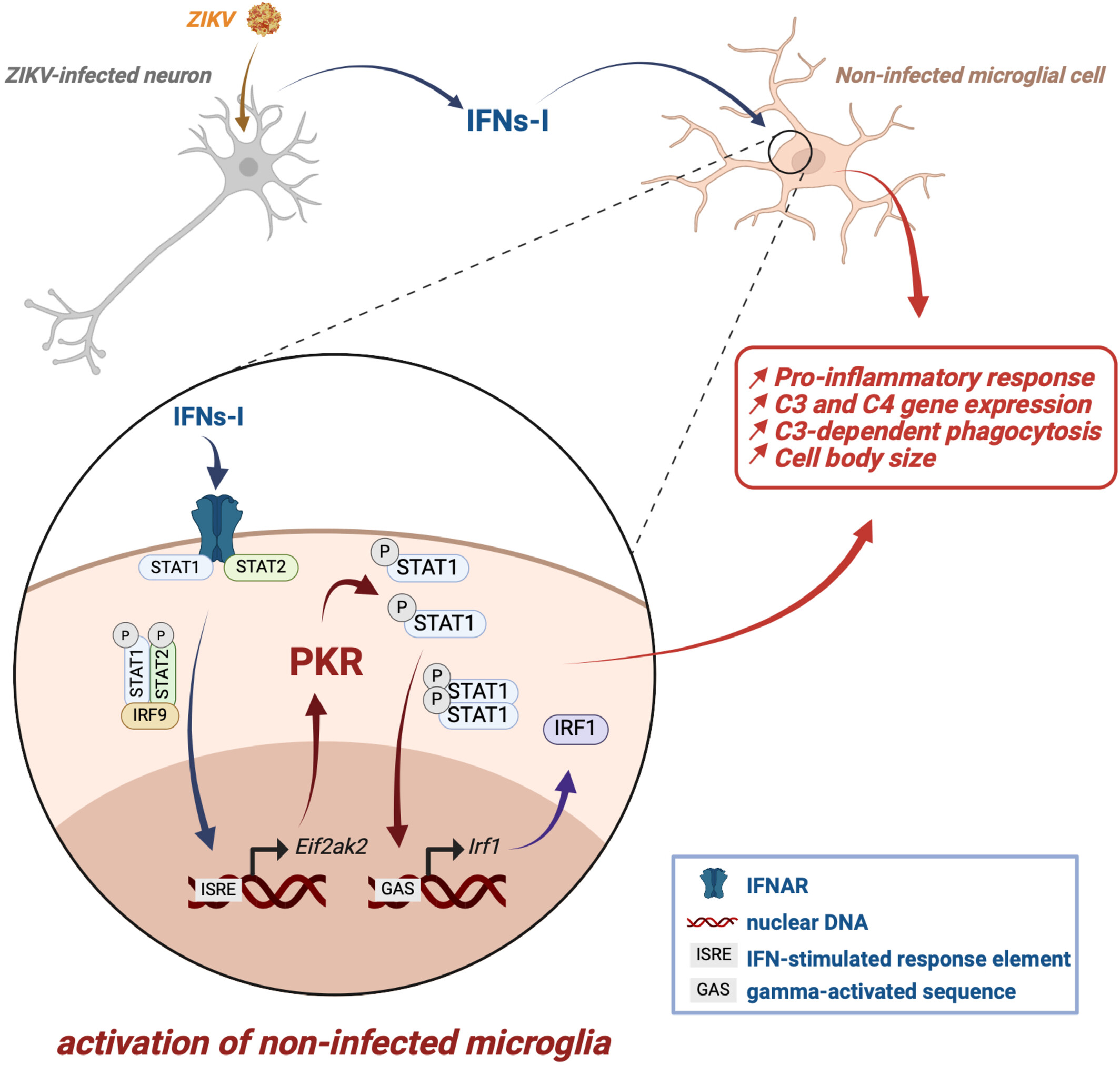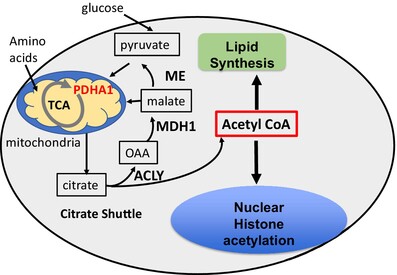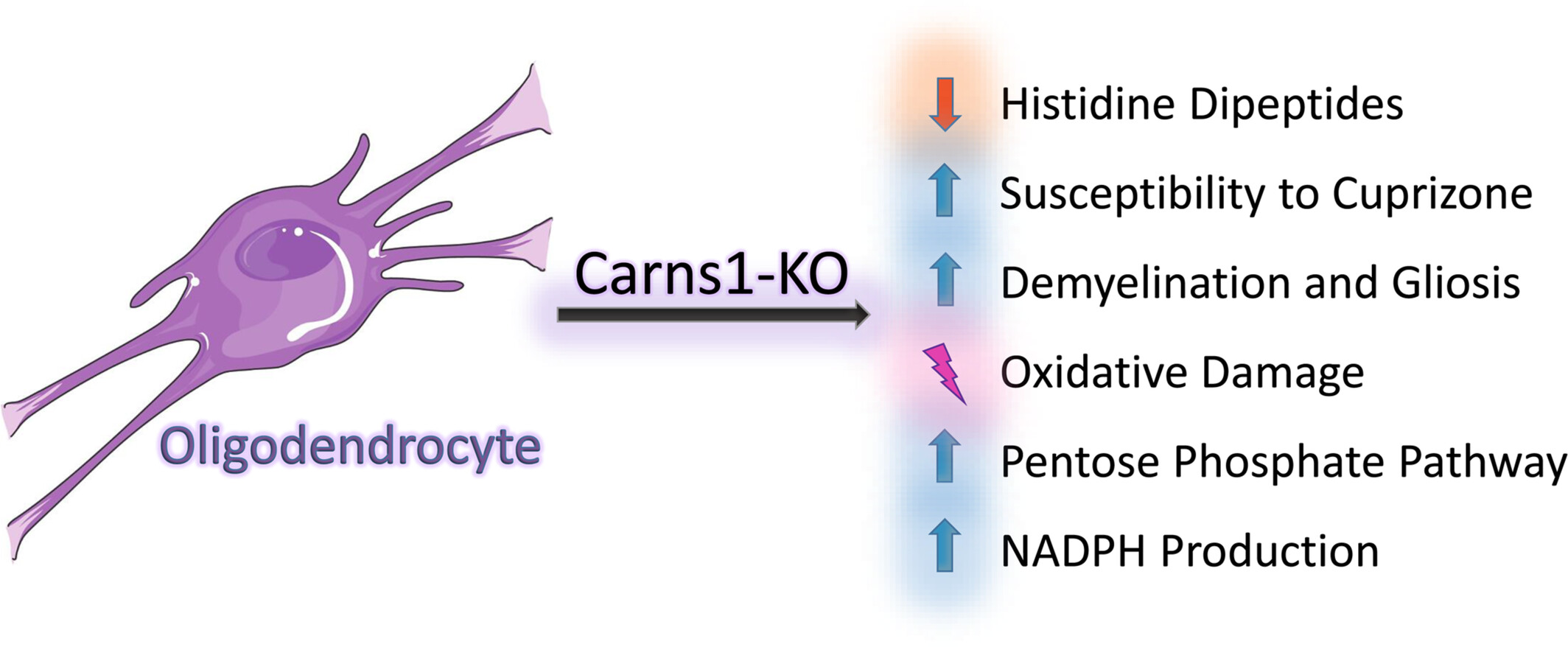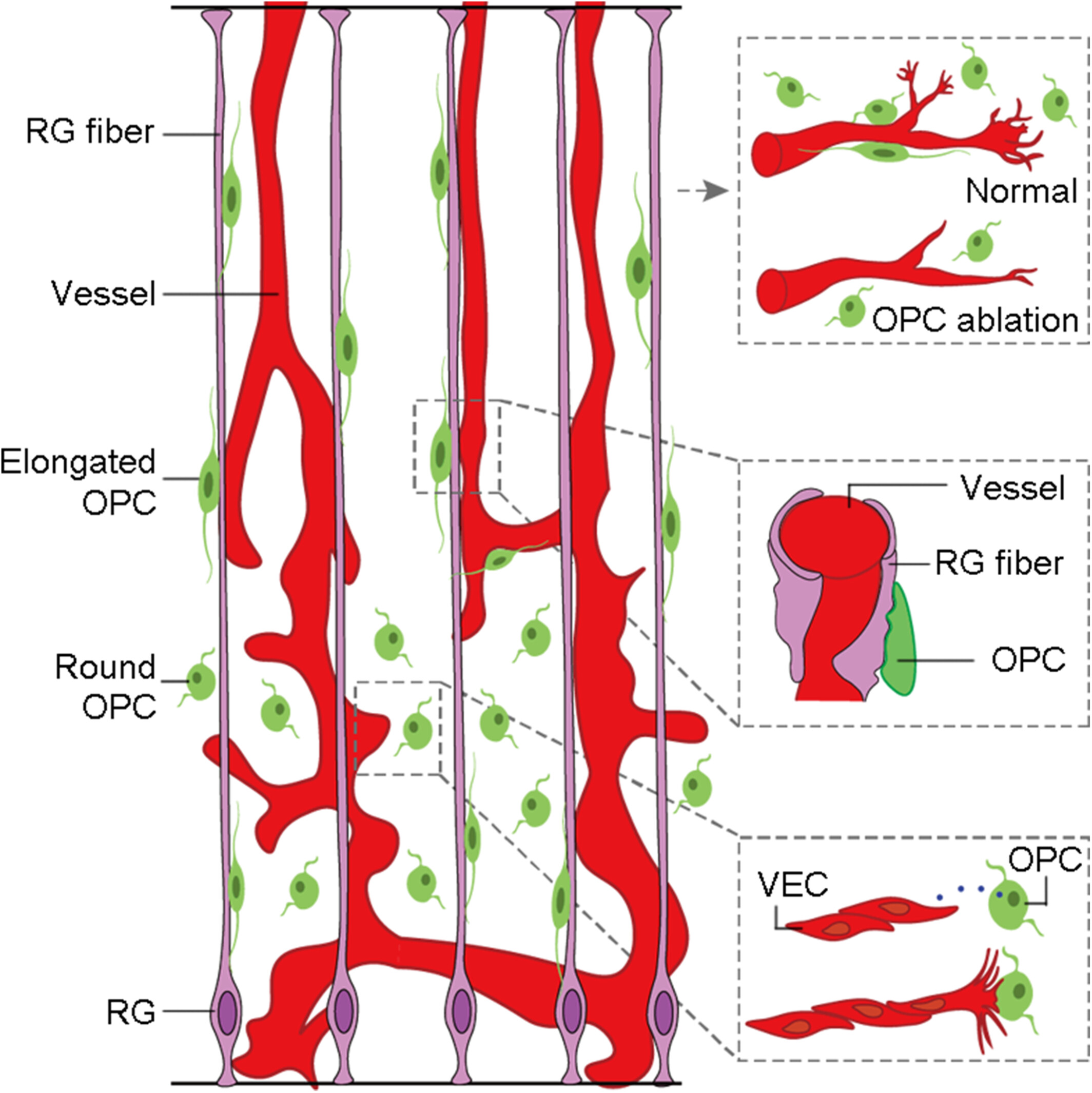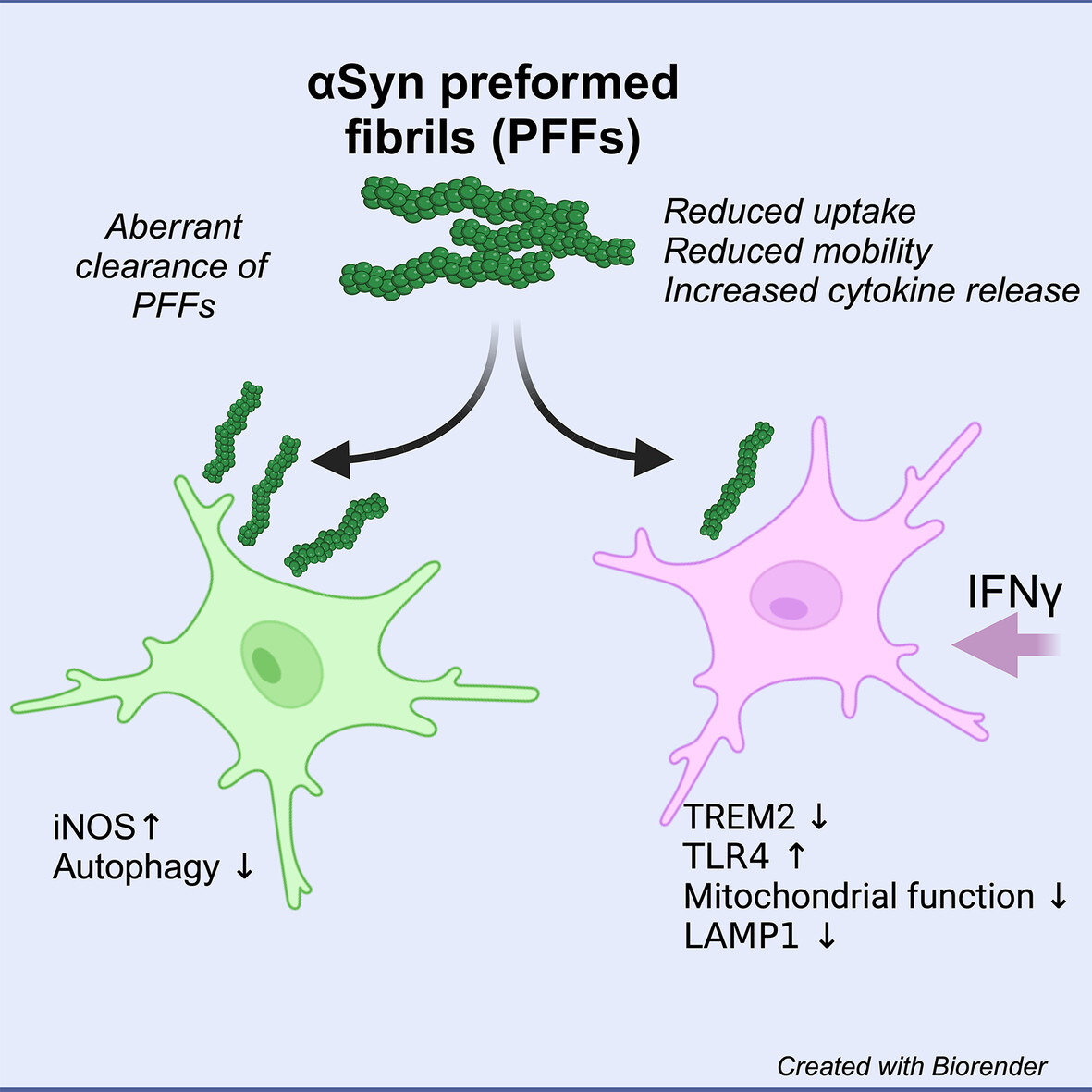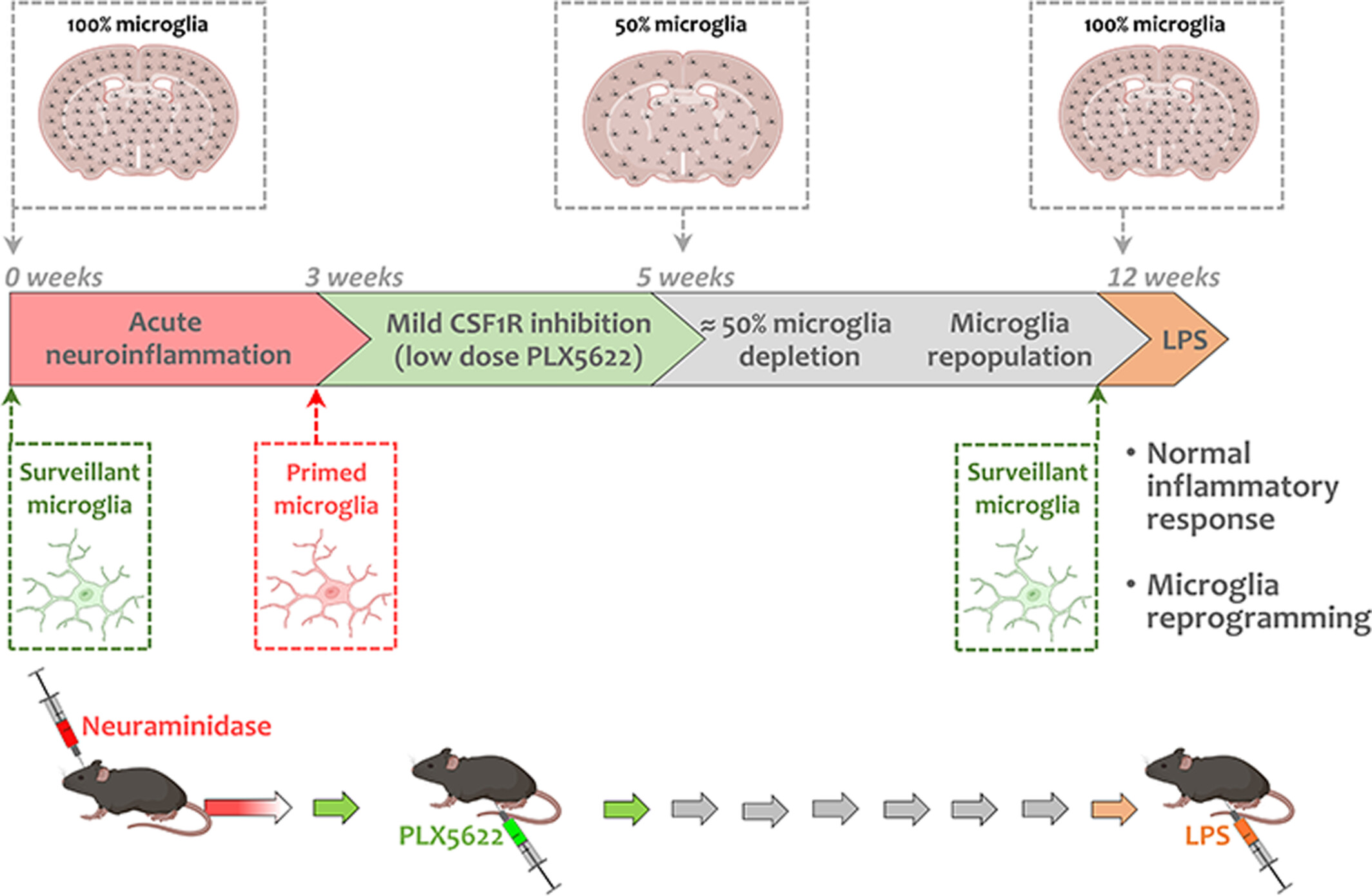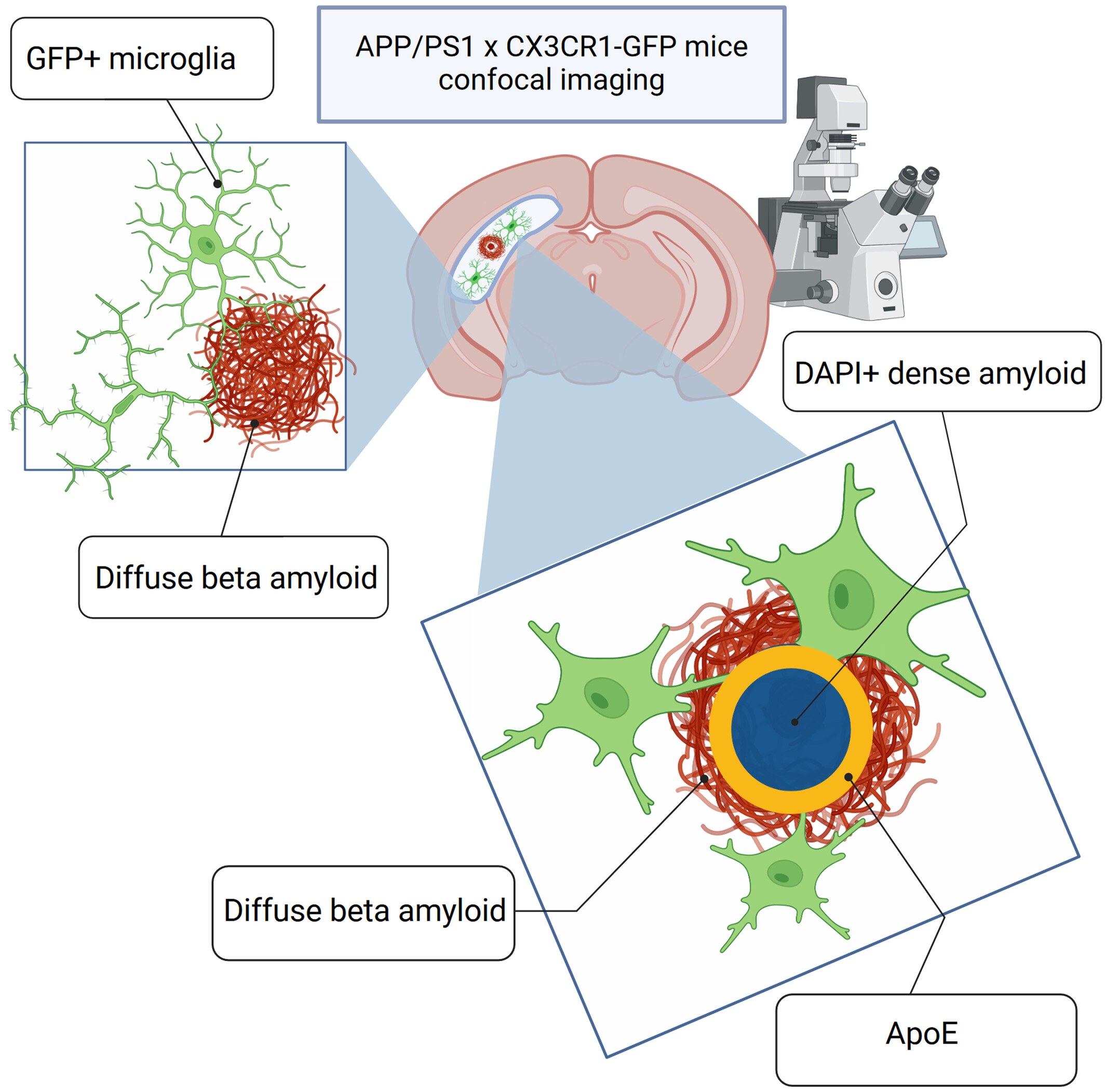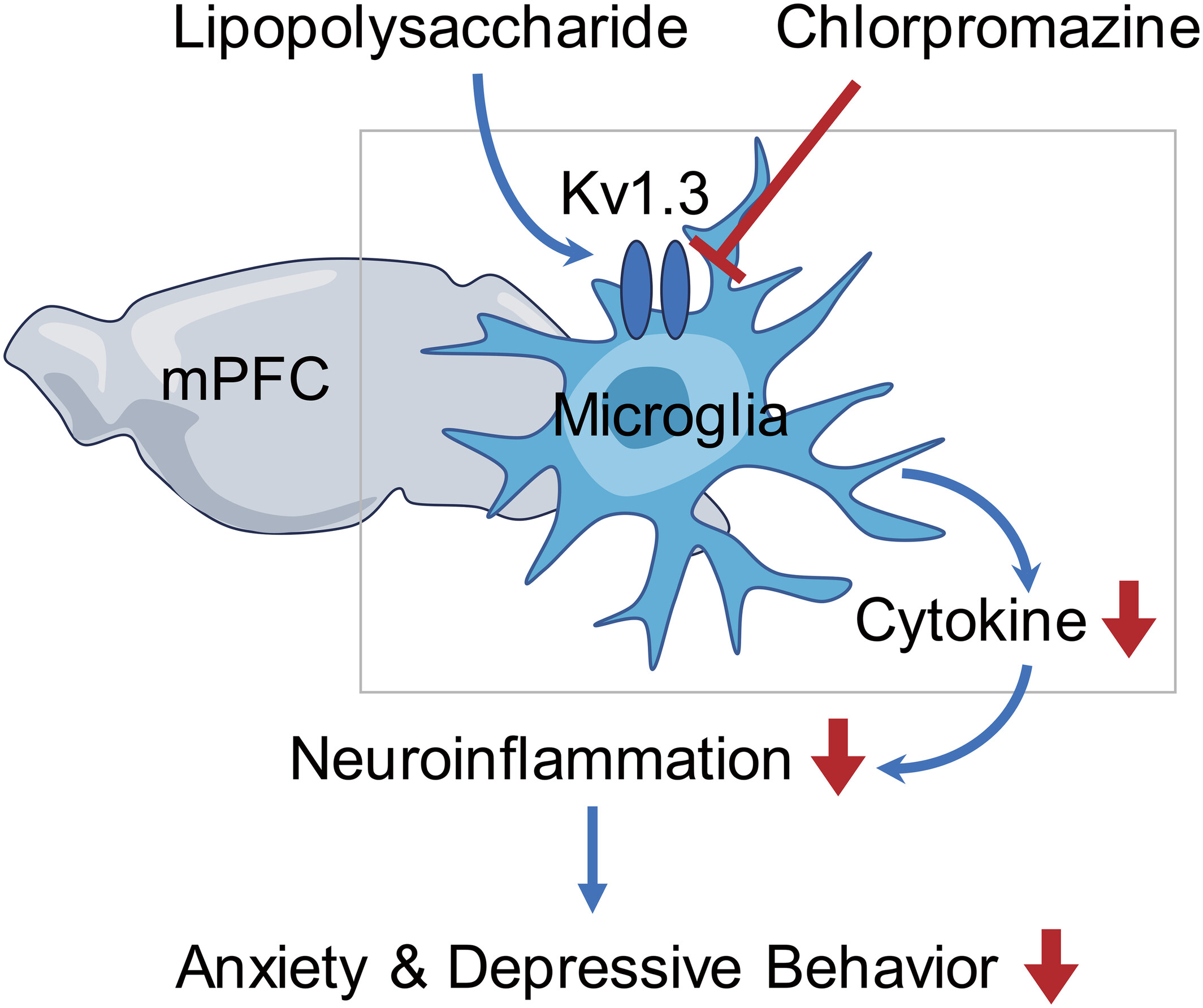Journal list menu
Export Citations
Download PDFs
COVER IMAGE
Cover Image, Volume 73, Issue 1
- Page: C1
- First Published: 20 December 2024
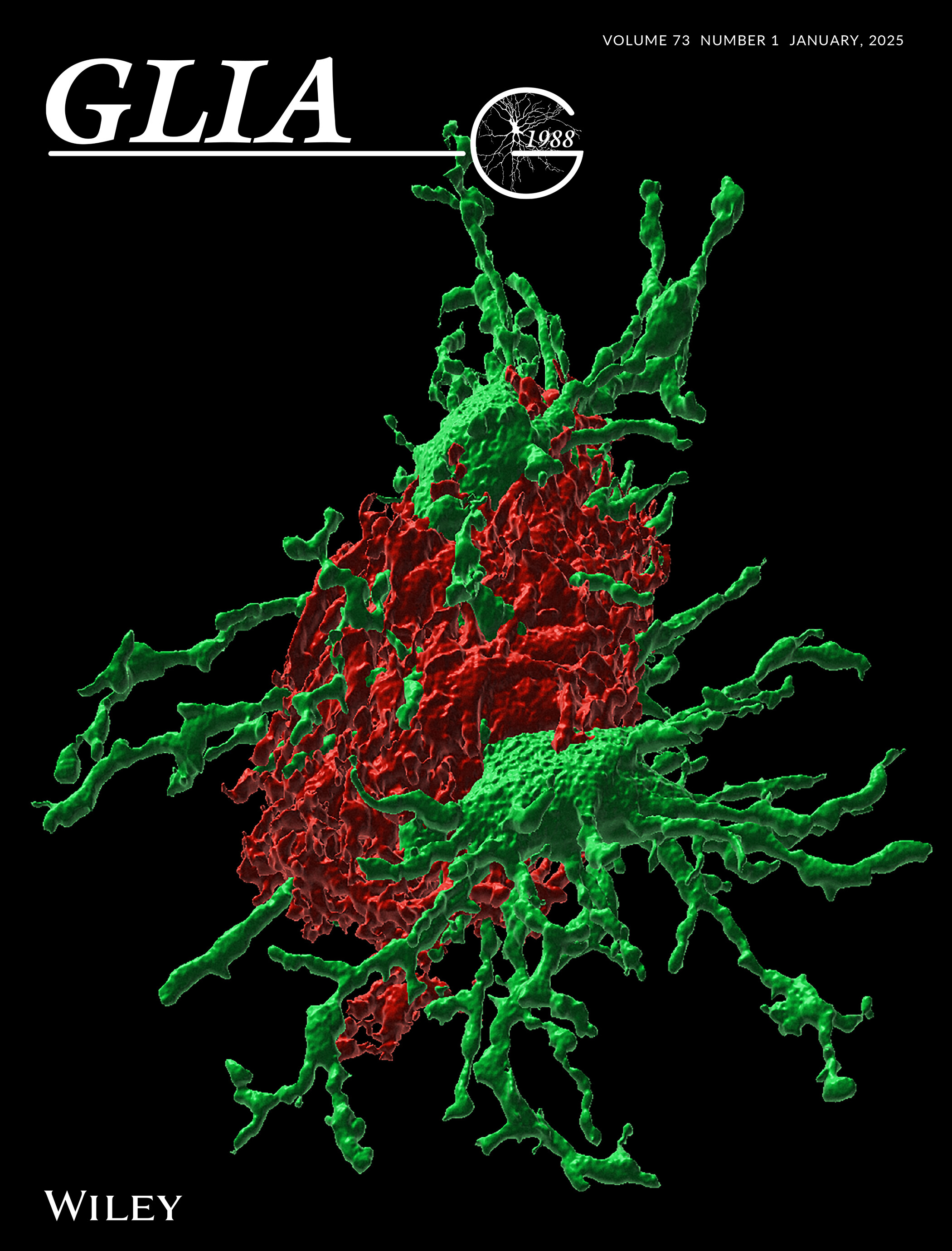
Cover Illustration: 3D IMARIS render of Airyscan confocal z stack image showing the GFP microglia (green) processes diving into the diffuse amyloid plaque shell stained with anti-Aβ antibody D54D2 (red). Activated microglia interacts here with the plaque in two ways: with soma going deep into the plaque, and with thin processes which are intertwined in looser amyloid layers. (See Gotkiewicz, M., et al, https://doi.org/10.1002/glia.24628)
ISSUE INFORMATION - TABLE OF CONTENTS
REVIEW ARTICLE
Regulating the formation of Müller glia-derived progenitor cells in the retina
- Pages: 4-24
- First Published: 24 October 2024
RESEARCH ARTICLE
Leptin reduces LPS-induced A1 reactive astrocyte activation and inflammation via inhibiting p38-MAPK signaling pathway
- Pages: 25-37
- First Published: 23 September 2024
Developmental maturation and regional heterogeneity but no sexual dimorphism of the murine CNS myelin proteome
- Pages: 38-56
- First Published: 30 September 2024
Aberrant neurodevelopment in human iPS cell-derived models of Alexander disease
- Pages: 57-79
- First Published: 23 September 2024
Protein kinase R induced by type I interferons is a main regulator of reactive microglia in Zika virus infection
- Pages: 80-104
- First Published: 03 October 2024
The role of ATP citrate lyase in myelin formation and maintenance
- Pages: 105-121
- First Published: 25 September 2024
Endogenous histidine peptides are physiological antioxidants that prevent oligodendrocyte cell death and myelin loss in vivo
- Pages: 122-139
- First Published: 03 October 2024
The role of oligodendrocyte progenitor cells in the spatiotemporal vascularization of the human and mouse neocortex
- Pages: 140-158
- First Published: 11 October 2024
Uptake of alpha-synuclein preformed fibrils is suppressed by inflammation and induces an aberrant phenotype in human microglia
- Pages: 159-174
- First Published: 22 October 2024
Long-term reprogramming of primed microglia after moderate inhibition of CSF1R signaling
- Pages: 175-195
- First Published: 24 October 2024
Three-dimensional view of microglia—amyloid plaque interactions
- Pages: 196-209
- First Published: 22 October 2024
The antipsychotic chlorpromazine reduces neuroinflammation by inhibiting microglial voltage-gated potassium channels
- Pages: 210-227
- First Published: 22 October 2024




